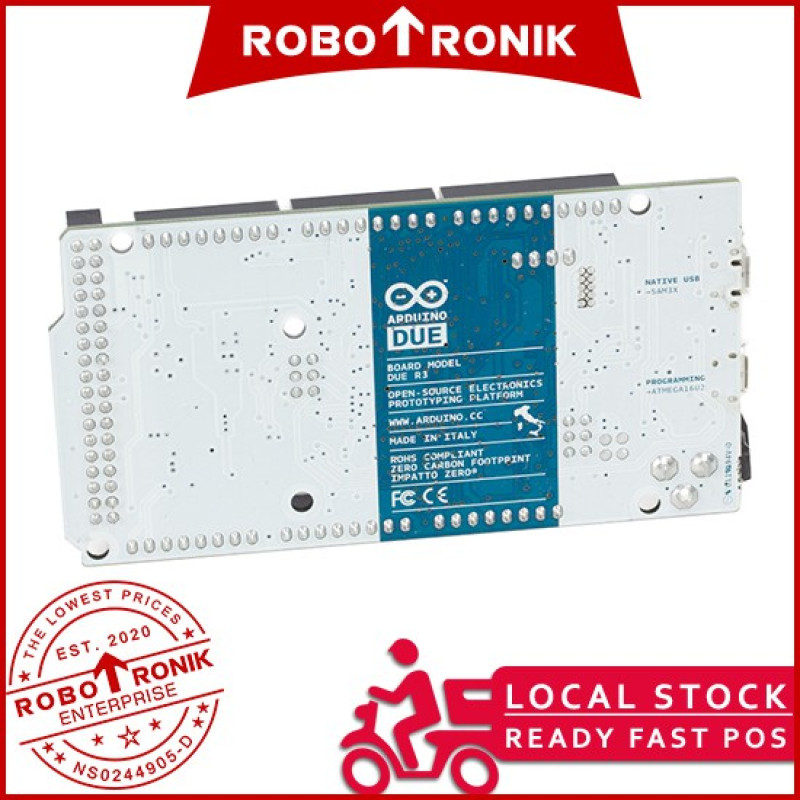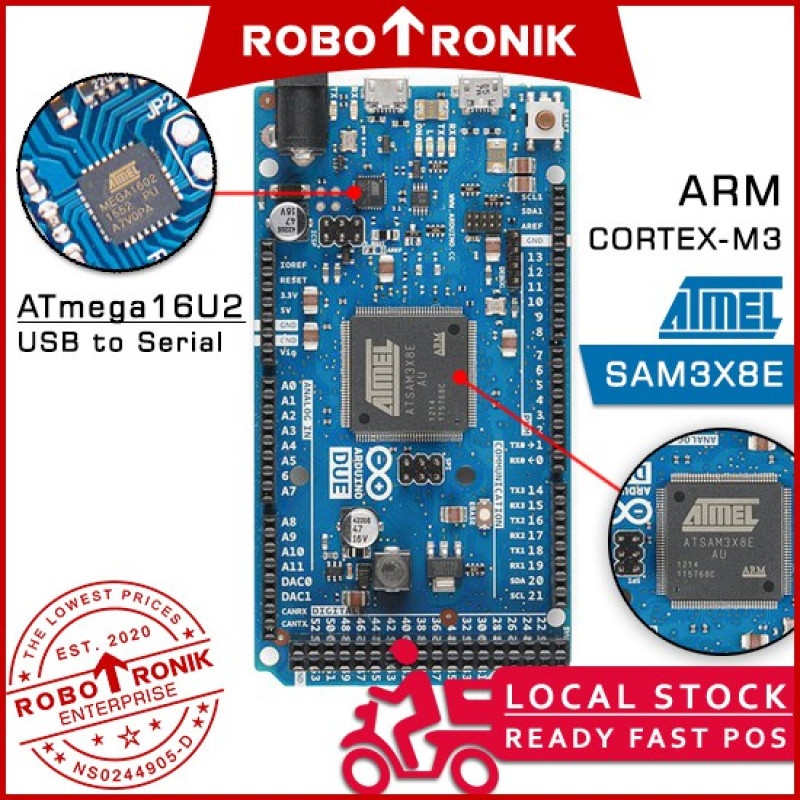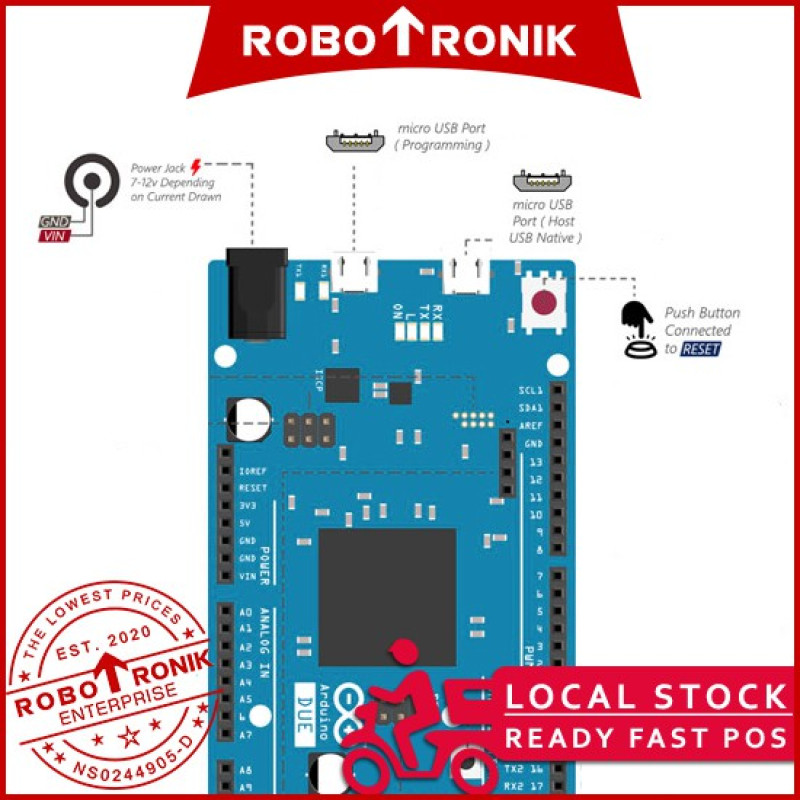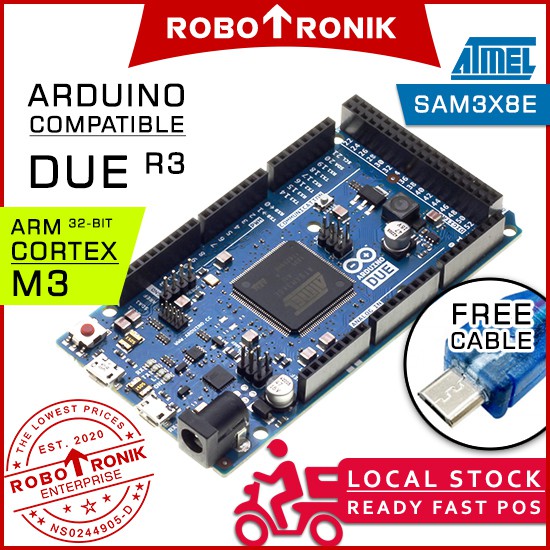









DUE R3 (SAM3X8E) 32-bit ARM Cortex-M3 (3.3V) Microcontroller Development Board
RM259.99
- Product Code: M-CTRL-DUE-R3
- Category:
- Micro-Controller
✍The Due is Arduino’s first ARM-based Arduino development board. This board is based on a powerful 32bit CortexM3 ARM microcontroller made programmable through the familiar Arduino IDE. It increases the computing power available to Arduino users keeping the language as compatible as possible so that many programs will be migrated in a matter of minutes!
- - - - - - - - - -- - - - - - - - - - - - - - - - - - - -- - - - - - - - - - - - - - - - - - - - -
✍ Features
Microcontroller: AT91SAM3X8E
Operating Voltage: 3.3V
Recommended Input Voltage: 7-12V
Min-Max Input Voltage: 6-20V
Digital I/O Pins: 54 (of which 12 provide PWM output)
Analog Input Pins: 12
Analog Outputs Pins: 2
Total DC Output Current on all I/O lines: 130 mA
DC Current for 3.3V Pin: 800 mA
DC Current for 5V Pin: 800 mA
Flash Memory: 512 KB all available for the user applications
SRAM: 96 KB (two banks: 64KB and 32KB)
Clock Speed: 84 MHz
===========================================
▼Package included
1 x Arduino DUE R3
1 x Micro USB cable
✍To compile code for the ARM processor, you’ll need the latest version of the Arduino IDE: v1.5 (After a period of testing and debugging this will replace the 1.0.1 IDE altogether) Because of the limitations of system voltage imposed by the Atmel SAM3X8E, Arduino shields that are based on the 5v models won’t work properly. All the shields that fully implement the Arduino R3 layout are compatible straight away (like the Arduino WiFi shield and Ethernet Shield) but other shields might not be compatible. Be careful when you’re plugging stuff in!
✍*Note: Unlike other Arduino boards, the Arduino Due board runs at 3.3V. The maximum voltage that the I/O pins can tolerate is 3.3V. Providing higher voltages, like 5V to an I/O pin could damage the board.
▖▖▖▖▖▖▖▖▖▖▖▖▖▖▖▖▖▖▖▖▖▖▖▖▖▖▖▖▖▖
???? Anything can ws us @ +6018 2870 232 ✅
